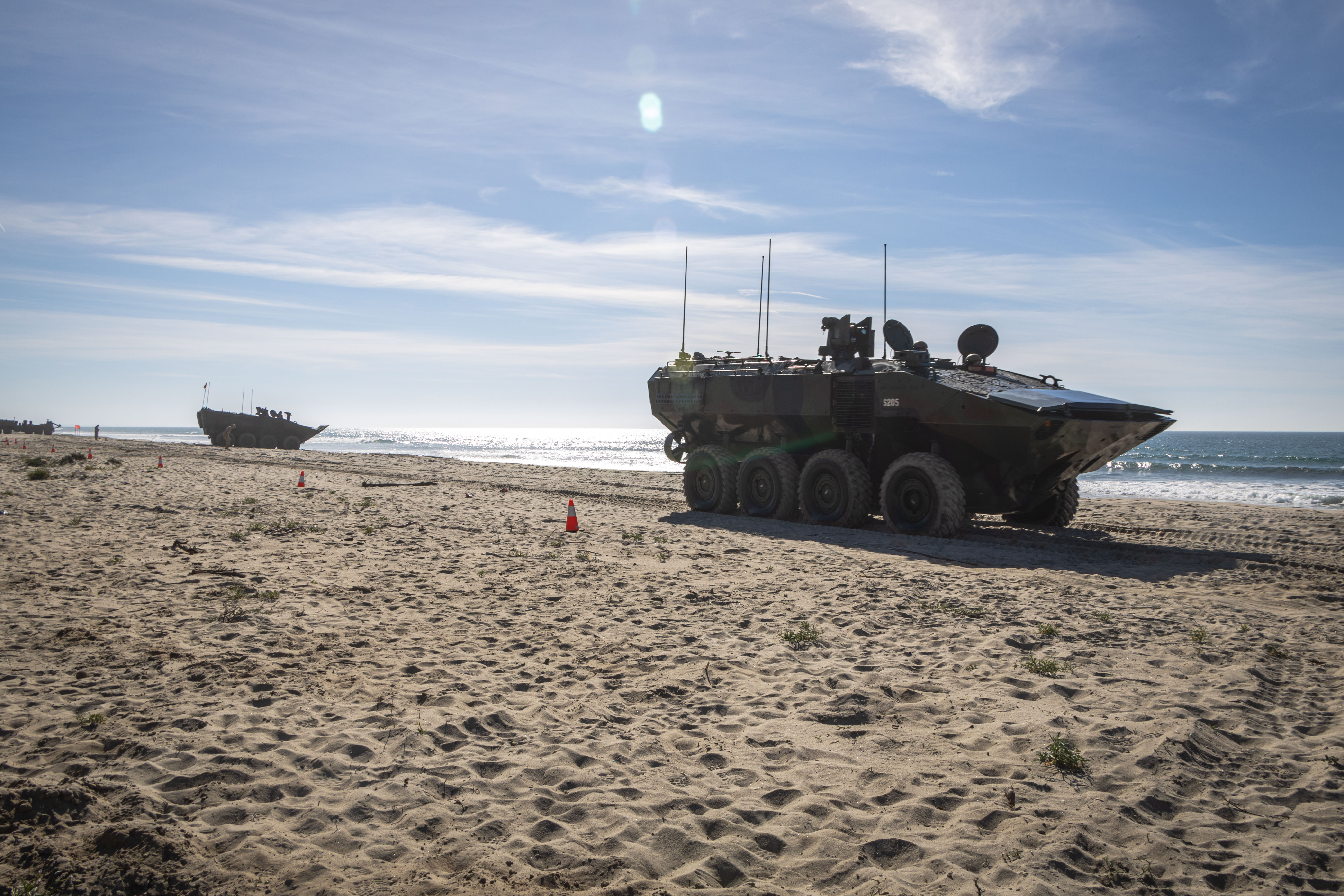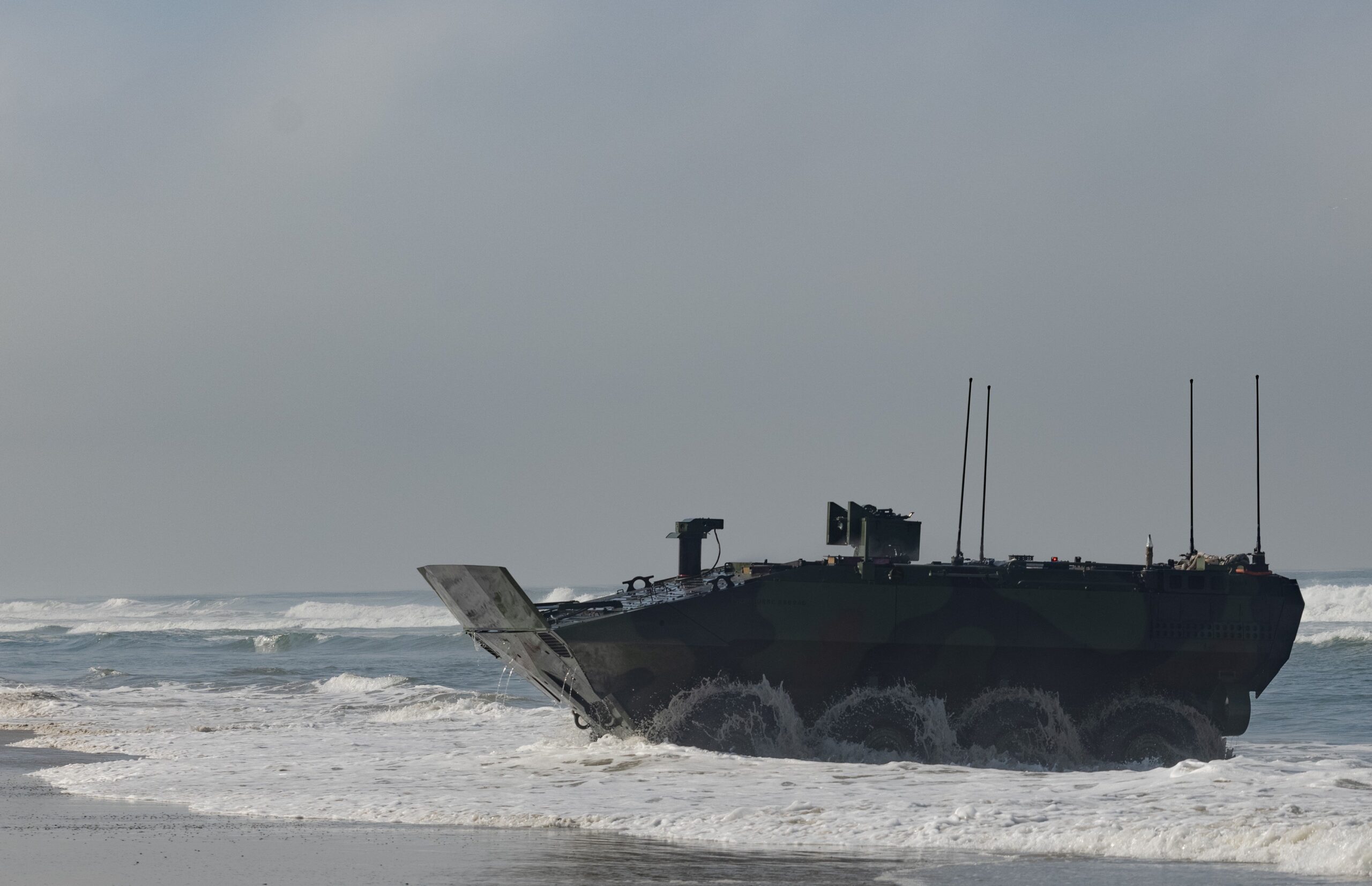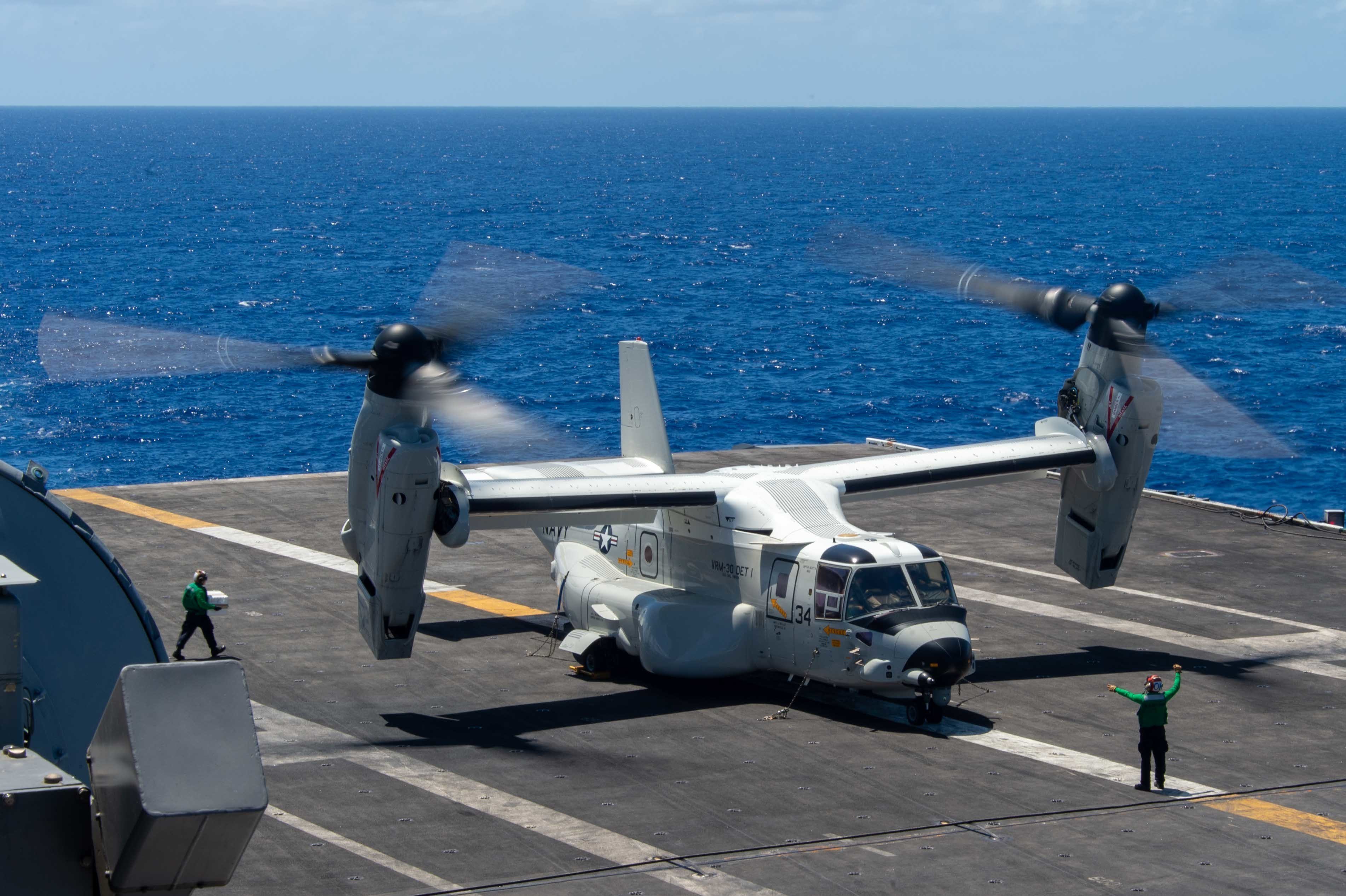
WASHINGTON, D.C. – The Marine Corps’ first new armored infantry landing craft in more than 50 years is almost ready to deploy, the service’s number two officer said on Thursday.
The first operational Amphibious Combat Vehicles (ACVs), the long-gestating replacement for the 1970s-era AAV, will embark with the 15th Marine Expeditionary Unit aboard the three ships in the Boxer Amphibious Ready Group in early spring, Assistant Commandant of the Marine Corps Gen. Chris Mahoney said during an event at the Hudson Institute.
“The ACV will deploy with the 15th MEU and we’ve started protected waterborne operations. We have very detailed checklists, criteria to get that platform back into unprotected waters and we’re working on that,” Mahoney said in response to a question from USNI News.
“There are a couple of more things to go but I’m confident that we will get the training, get the procedures and the methods to the level that we need to be confident in in rough sea states.”
Mahoney told USNI News that there aren’t concerns with the material conditions in terms of the ACV being able to deploy and the focus was on certifying crews to operate the vehicles safely.

Pending the completion of the training, the ACVs will be deployed on USS Boxer (LHD-4) and the amphibious warship USS Harpers Ferry (LSD-49) as part of the 15th MEUs Pacific deployment. The third ship in the amphibious ready group (ARG), USS Somerset (LPD- 25), is planned to operate apart from the other two ships for part of the float to support Exercise Malabar with the Indian Navy and Cobra Gold in Thailand later this year, USNI News understands. Last month, a 15th MEU Marine died in a rollover accident during ACV training.
ACVs were initially slated to deploy with the East Coast 26th MEU aboard the Bataan ARG – currently on station in the eastern Mediterranean – last year but were held back after the Marine Corps completely rewrote the training regime for the new eight-wheeled landing craft and recertified all crews last year.
Rebuilding the ACV training syllabus followed a high-profile incident in 2022, in which two ACVs were disabled and partially rolled over in the heavy surf on the California coast.
The Marine Corps’ plan to transition from the AAV to the ACV was shelved after a 2020 amtrac accident off the coast of California resulted in the death of eight Marines and a sailor. The unexpected departure of the AAVs from the fleet has prompted the Marine Corps to retool what it deploys with while waiting for the ACVs to come online.
The 26th MEU added 11-meter rigid-hull inflatable boats and a Navy SEAL detachment to enhance the visit, board, search and seizure and special operations capability of the MEU. The Bataan ARG also embarked a specialized group of sailors and Marines trained to provide protection to merchant ships transiting in the Middle East, USNI News previously reported.
While at Hudson, Mahoney touched on the ongoing grounding of the V-22 Osprey fleet across the Marine Corps, Air Force and Navy.

All variants of the Osprey have been grounded for almost three months following the crash of an Air Force Special Operations CV-22B off the coast of Japan in November.
Following the Dec. 6 grounding, Naval Air Systems Command (NAVAIR) said the “preliminary investigation information indicates a potential material failure caused the mishap, but the underlying cause of the failure is unknown at this time.”
Since then, neither NAVAIR nor the Air Force have provided additional information from the initial crash investigation. Mahoney said there was no timeline to lift the grounding and that the investigation was continuing with cooperation among all of the services and overseen by NAVAIR.
He didn’t provide details on the investigation, but said the “hard clutch engagement” that was the root cause of at least earlier two Marine V-22 crashes had been largely solved with the timed replacement of a specific drive-train component.
In the meantime, the Navy and Marine Corps have created workarounds to fill the gaps left by the Osprey groundings. Left without the CMV-22B carrier onboard delivery logistics aircraft, the West Coast Carl Vinson and Theodore Roosevelt Carrier Strike Groups have reverted to using the older C-2A Greyhound for the logistic missions for the aircraft carrier.
The Bataan ARG stationed in the Mediterranean have been given special permission to use V-22s in the case of an emergency. USNI News understands the primary mission for the ARG/MEU in the region is to support a noncombatant evacuation from Lebanon, if required.
But for day-to-day logistics, the 26th MEU has relied on Marine CH-53E Sea Stallion heavy-lift helicopters, Mahoney said.
While the Marines have fixes in the short term, Mahoney said there was a concern of Marines losing skills, depending how long the grounding lasts.
“At some point, if a pilot doesn’t fly if a maintainer doesn’t turn a wrench, if an observer or crew chief isn’t plying their trade it becomes a competence issue and then there’s a safety issue,” he said.





